It's advisable to come early, as there are 300 delegates to be registered. The conferences will commence at 09:00 sharp, in order to meet the event schedule.
![]() Location: In front of the main Conference Hall
Location: In front of the main Conference Hall
days
hours
minutes
seconds
In October 2018, Frankfurt was home to the first ever international conference on People Analytics in Germany. The event brought together HR practitioners and other professionals from 11 countries and 3 continents and was a massive success. It was only natural to continue to bring the HR community further together around the topic of data-driven HR. Here's what people had to say about it:
The story starts with a simple fact – you cannot ignore digitalization and stay competitive in business, let alone be a market leader in any business. We live in a world where a smartphone app can change the market landscape in a matter of weeks. Love it or hate it – you can’t ignore it. Improved workforce productivity and performance, enhanced employee experience and wellbeing, and better HR reporting at a strategic level, are essential to the success of organizations and their ability to survive, now and in the decades to come. All this comes at a time when talented and highly skilled employees are not just becoming harder to recruit and retain, but actively rethinking their desired relationships with employers.
So, the HR has to go digital; and as organizations look to cope with these changes, they are embracing the workforce analytics at ever greater pace. These analytics can be used to improve workforce productivity, enhance employee experience and wellbeing, and increase the impact of HR overall. Undoubtedly, workforce analytics is central to the future of HR, as it lies at the heart of initiatives to personalize the employee experience, optimize organizational design and improve team collaboration and effectiveness.
Now, that is – by any accounts – a pretty big deal.
A truly outstanding event has speakers characterized by 3 things ENERGY ∙ PASSION ∙ RELEVANT CONTENT above all else. We keep it that way.




DATA-DRIVEN HR & PEOPLE ANALYTICS conference series brings you the blueprint on how to successfully implement HR Analytics at strategic and tactical/ops level. You will hear real-life examples form the Global Fortune500 corporations, as well as some of the World's leading academic and business minds in the field, presenting data-based facts & figures, trends & tendencies for the near, mid and long-term outlook of the Future of Work.
Superb delegate's experience above all else.
Delegates come first, always.
DATA-DRIVEN HR & PEOPLE ANALYTICS FORUM is not a trade-show. It is an independently organized HR conference for HR practitioners. It features a variety of Ted-style talks in a vendor-free conference room.
The purpose of the DATA-DRIVEN HR & PEOPLE ANALYTICS FORUM is to be a meeting place of Corporate HR practitioners, to share their views, insights and knowledge among the industry peers. We firmly believe that a vendor-free stage provides the optimal conditions to have a valuable, engaging, fun and stress-free learning experience with colleagues and other HR professionals.
The conference does not feature any sponsored talks, as its core nature is PRACTITIONERS APPROACH – real-life case-studies from the Corporate HR world.
Corporate HR delegates can meet the representatives of various Vendor and HR consultancy solution providers, in the separate HR Tech Expo area, if they choose to do so. This is a vendor-dedicated space, separated from the main conference-room. Delegates can freely mingle around the HR Tech Expo. However, vendor representatives cannot access the main conference ball-room or attend panel-discussions and presentations.

Technology is changing the world of work and big data plays a key role in the process. Sorting out the “ocean of information” is the game-changer. HR analytics is not yet-another-hype, but a trend that is growing and is here to stay. It is increasingly becoming the “way we do things around here”. If you don’t have the right data – you are uninformed. If you have too much of unsorted data – you are overwhelmed. As a busy HR person, you can’t afford either. The quality of your decisions has a direct and lasting impact on your organization. The HR analytics provide a solution to that challenge.
DATA-DRIVEN HR & PEOPLE ANALYTICS NYC FORUM is a 2-day conference dedicated to presenting, understanding and embracing the use of data-driven analytical approach in HR function, and business as a whole. The data-driven decision-making process is recognized as the key differentiator in today’s workplace, giving companies who apply it properly a substantial edge.
London, Amsterdam, Barcelona, San Francisco and London are regularly hosting world-class HR analytics conferences ever more often. We wanted to bring some of that world closer to you!
The goal of this conference is to help you – the attendee – to choose the best practices, tools & techniques for your organization and your own role. Some of the topics that we will talk about include:
· Building HR Analytics Functions, Teams, Capabilities and Support
· Data-Driven Recruitment and Talent Management
· Smarter Workforce Planning for Growth or Downsizing
· Technology-Enabled Employee Insights
· AI in HR
· Workforce Differentiation and Predicting Attrition Impact
· Identifying and Developing Leaders among Candidates and Talent Pools
Most notably many of the Global Top People Analytics Thought-leaders and influencers and many, many:
· CHROs & HR Directors
· HR Analytics function heads
· HR Business Partners for Analytics
· Analytics professionals and SMEs
· Other senior managers, professionals and SMEs from HR, IT, Data and Analytics functions
· Media, Press and Academia representatives
Learn about latest trends, applications, tools & best-practices
Understand why is HR analytics estimated as €18Bn market
Meet top speakers from Europe and the World
Participate in discussions and have fun
Presentations you will hear are from real world. Presenters will talk about REAL projects, REAL challenges, REAL issues, REAL success & failures and REAL people. No death by Power Point!

You will benefit by learning about strategic-level importance of HR 4.0 and People Analytics. You will be empowered to widen your CEO’s and other Senior Managers horizons, by pioneering successful change management initiatives. You will have data-based facts that will enable you to shift the organizational mindset from fixed to grow. You will have data-based business insights, that will enable you to present outcome scenarios to your Board. You will earn the seat at the table!
You will benefit by seeing and hearing the real stories, from the real people at operational-level of running the People Analytics Teams and departments. You will learn about the best practices in data-collection and processing, data-visualization and story-telling. You will become the most trusted adviser to your CHRO on value of data-based recruitment, talent-management, employee –satisfaction and retention, reward strategies benefits and much more.
You will benefit by learning about operational-level implementation projects of People Analytics solutions; the mistakes that others made (so that you won’t). You will be presented with step-by-step processes, the challenges and roadblocks the team encountered along the way, how they’ve gained the stakeholders support, what worked and what’d didn’t and their lessons learned on these projects.
Probably it’s self-evident by now, albeit we’ll say it – you will have an all-day access to some of the very top HR decision makers and influencers in this part of the world and beyond. You will have an opportunity to network with not only delegates, but speakers, panelists, prominent journalists and bloggers and many of global Top100 minds in the field, from around the world. Naturally, you’ll get your exhibition space right in front of the main conference hall.

Real people real stories
HR 4.0, People Analytics, Workforce Analytics, HR Analytics… to some it might sound “Chinese”. Then let us add the data-visualization, AI, Robotics into the mix, top it with a huge those of IT… and you might ask - are we here to “talk HR or what?!?” Yes, off course we are here to talk HR and the key-note speakers you will see and hear will do exactly that. They are here not only to give you the high-level overview of the global state of affairs in terms of adoption rates of analytics in HR, but also give you guidance and vision to what really matters and what doesn't, what's important and what's "hot air".
For the most part, you'll hear from Corporate HR colleagues, talking about their projects and their people, what they've done, how they've done it, what worked for them and what didn’t. What they’ve learned along the way, how they’ve managed change and resistance and much, much more.
Last, but not least - you will get quality insights into research projects conducted by some of the most brilliant scientific minds, PhD’s, university professors and data-scientist, who will present their findings and its practical applications in the corporate arena.

Global People Analytics Lead
Deloitte
Distinguished Key-note Speaker


VP Research & Thought Leadership
CIPD
Distinguished Key-note Speaker


Managing Partner
Karian & Box
Distinguished Key-note Speaker
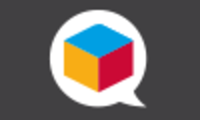
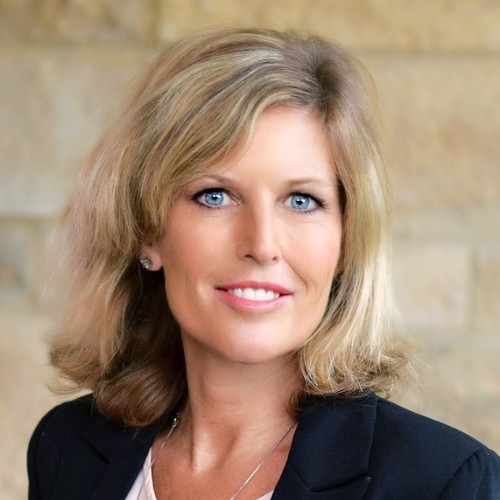
VP Talent & Workforce Research
Bersin Deloitte Consulting
Distinguished Key-note Speaker


Lead HR Analytics Consultant
SAP AG


Director Europe & APAC
Virgin Pulse


CEO
Employer Branding Institute


Global Head of People Analytics
Robert Bosch GmbH


Research Fellow
Vanderbilt University


People Analytics Lead
GitHub

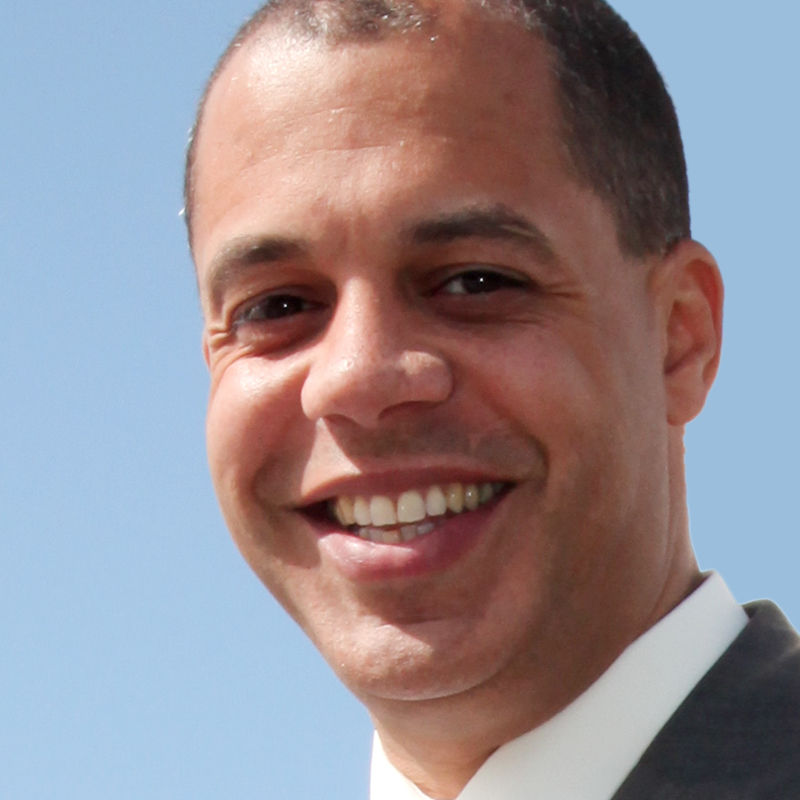
Founder
Zyvo

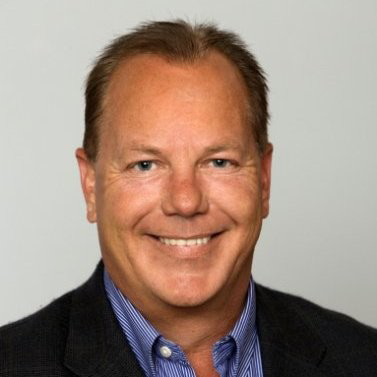
Head of HR Reporting & Analytics
Nokia


Lead HR Analytics Analyst
Diageo
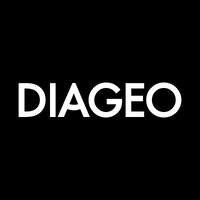

Project Lead People Analytics
Mannheim Business School


Team Lead Recruiting & Analytics
FlixMobility GmbH


Senior Solution Architect
Netcentric
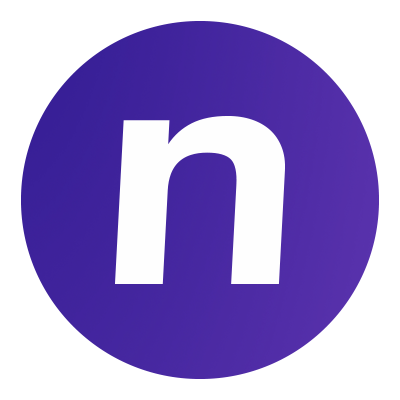
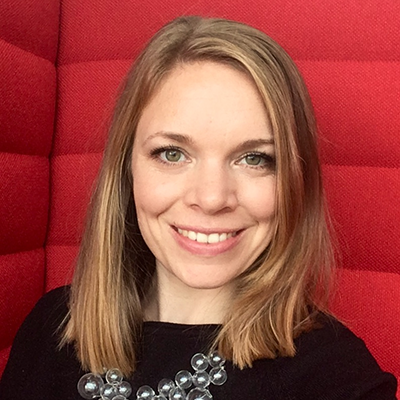
Founder
Rhein-Main People Analytics Meet-up
Forum Moderator

Both days start with a distinguished key-note presentations followed by a panel discussion. The program continues with case-studies from the corporate HR and success stories with People Analytics, crowned by research findings from the elite think-tank institutions.
It's advisable to come early, as there are 300 delegates to be registered. The conferences will commence at 09:00 sharp, in order to meet the event schedule.
![]() Location: In front of the main Conference Hall
Location: In front of the main Conference Hall
Who runs the show?
 Julia Altenburg
Julia Altenburg
Julia is a founding member of the Rhein-Main People Analytics Meet-up and as one of the „first movers“ involved in the People Analytics scene Germany since 2013.
She is a frequent international speaker, panelist and advisor. Julia has worked as a scientist, psychologist and progressive HR professional and is an experienced coach and consultant for private individuals and corporations.
About the Speaker:
 Luk Smeyers
Luk Smeyers
Luk is an experienced CHRO who has lead complex transition projects for compelling blue chip companies.
He has an enviable background performing strategic and operational roles for dynamic, change-oriented companies and has managed at board level through business start-ups, turnarounds, acquisitions, divestitures, joint-venture creation, down-sizing and restructuring on a pan-European basis.
With his result and people oriented focus, he has made substantial difference everywhere and established deep shifts in perspectives and strategies.
In 2008, Luk started as a Human Capital entrepreneur and established a cutting-edge HC Analytics consultancy, together with academic partner Dr. Jeroen Delmotte (www.linkedin.com/in/jeroendelmotte).
Luk is passionate about quantifying and predicting the business impact of people investments. Predictive workforce Analytics is all he does and he is widely recognized as one of the few European top HR intelligence experts.
Luk is revered as a leading thinker, educator, influencer and is a well-known content contributor, blogger, columnist and author of many articles. He is an invited speaker at international conferences and helps clients set a higher ambition for strategic HR intelligence, leading consultative projects and strategy meetings with such organizations as Ahold, Deloitte, BNP Paribas, Zurich, ING, KPN, ABN-AMRO, AXA, Philips, Rabobank, UWV, RealDolmen, Acerta, NS, BASF, Besix, Strukton, Bekaert, Randstad, Eandis, AG, Postnl, AON, Raet, to name a few.
Presentation focus:
Sharing learnings from executing over 100 projects in the past 5 years with regards to implementing the People Analytics function.
Overview:
In our projects, we are seeing that many organizations are starting with People Analytics without thinking of an operating model. We have experienced many times that organizations get stuck after a while and are not making (analytical maturity) progress anymore because the lacking 'rules of the game' (= operating model). I will take the participants thru my experiences and learnings in working with organizations that got stuck after a few initial experiments.
Key take-aways:
1. Understanding the critical necessity to invest in an operating model to become successful with People Analytics
2. How to start using the 4 pillars of a People Analytics Operating Model: People, Organization, Data & Technology
3. How to design a roadmap to implement the People Analytics Operating Model
Panelists:
 Luk Smeyers ∙ Global People Analytics Lead ∙ Deloitte
Luk Smeyers ∙ Global People Analytics Lead ∙ Deloitte  Barbara Zych, PhD ∙ CEO ∙ Employer Branding Institute
Barbara Zych, PhD ∙ CEO ∙ Employer Branding Institute Steffen Riesenbeck · Global Head of People Analytics · Robert Bosch GmbH
Steffen Riesenbeck · Global Head of People Analytics · Robert Bosch GmbHModerator:
 Julia Altenburg
Julia AltenburgCandid & controversial - not "just another" round-table
The coffee-break makes for a great occasion to mingle around some 300 delegates, share instant feedback about presentations you enjoyed the most, engage in casual chat and naturally visit the sponsors exhibition area.
![]() Location: HR Tech Expo in front of the main conference hall
Location: HR Tech Expo in front of the main conference hall
Presentation focus:
· People Analytics as a user centered approach
· Start People Analytics without data
· People Analytics can deliver consumer products
· People Analytics will change HR
· AI instead of classical HR approaches
· New roles and tasks for HR
Overview:
Many People Analytics projects start with data. Bosch goes another way. Together with business leaders, the project team identified the most relevant issues they are facing. The team is running the project with design-thinking approaches, focusing on end user needs and not starting with a data perspective. Join to see how this does work.
Key take-aways:
1. People Analytics has different ways to start, just do it your way
2. People Analytics supports employability and business needs
3. People Analytics will change HR
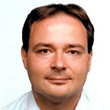 Speaker: Steffen Riesenbeck · Global Head of People Analytics · Robert Bosch GmbH
Speaker: Steffen Riesenbeck · Global Head of People Analytics · Robert Bosch GmbH
Presentation focus:
· What is data based employer branding?
· How to choose the right metrics to assess and optimize the employer brand
· Different maturity stages of people analytics usage in employer branding
· Integrating over 500 HR metrics into one employer brand model
Overview:
Employer branding is a complex construct that requires integrating different actions and metrics through the entire candidate-employee lifecycle. How to overcome this challenge when shaping the attrition and retention strategy, setting KPI and measuring the effects? Can it be based on single measures? Should we benchmark towards the other brands? How to integrate the people data to employer brand strategy? Presentation showing different maturity stages of people analytics usage in employer branding based on case studies from well-known big companies operating on the polish demanding market (from the banking to construction sector) such as:
∙ Shaping the salesforce recruitment communication based on performance based research
∙ Optimizing the recruitment campaigns based on performance based marketing
∙ Assessing and crafting the employer brand strategy based on 500 HR metrics
Key take-aways:
1. Choosing and integrating HR metrics is the most challenging task when we do data based employer – branding
2. Using people analytics to asses and optimize the employer brand can have different stages of maturity
3. Benchmarking is not the opposite to people analytics, it is a must have stage when applying it correctly
 Speaker: Barbara Zych, PhD. · CEO · Employer Branding Institute
Speaker: Barbara Zych, PhD. · CEO · Employer Branding Institute
Presentation focus:
∙ The Challenges of Large, Dynamic Organizations
∙ Getting our Analytics Act together: Why did it take so long?
∙ Moving into the Analytics Fast Lane
∙ Our People Analytics Operating Models
∙ How People Analytics is making and Impact
Overview:
At Nokia we develop Big Data Platforms for the telecom industry for a living! Why did it take so long for HR to start utilizing People Analytics for more strategic value? This presentation will focus on the challenges to getting started in a large dynamic organization, evolving a more structured approach and operating model for People Analytics and our current environment. It takes time and is a journey! This will be about our growth in People Analytics capability from the perspectives of People, Processes, Technology & Future Aspirations - Analytics in the Fast Lane!
Key take-aways:
1. How Nokia advanced in People Analytics Maturity
2. Operating Models depend on what Matters Most
3. Use Cases: There is so much Value to explore!
 Speaker: David Shontz · Head of HR Reporting & Workforce Analytics · Nokia
Speaker: David Shontz · Head of HR Reporting & Workforce Analytics · Nokia
A great opportunity to engage in a casual chat with speakers and your fellow delegates. Lunch will be served at the main hotel restaurant, providing a variety of specialties ranging from traditional German food to best international cuisine.
![]() Location: Main hotel restaurant
Location: Main hotel restaurant
Presentation focus:
∙ People analytics: from a hot topic to a sustainable discipline
∙ Tips for purposeful and sustainable people analytics
∙ Viewing people analytics as a step towards evidence-based management
∙ Treating organizations as unfinished prototypes that we continuously develop over time
Overview:
People analytics is a hot topic that has the potential to transform how HR as a function is operating. However, starting with people analytics seems often easier said than done. In this talk, I would like to show that people analytics does not need to be rocket science. We will talk about some misconceptions of people analytics and how to ensure that people analytics is purposeful and sustainable.
I will highlight 1) that people analytics does not need to be fancy, but effective 2) that we often do not have to reinvent the wheel, but can use existing scientific evidence as a starting point 3) that we should treat our organizations as unfinished prototypes – and people analytics can help us to develop them over time.
Finally, I will talk about why now is the right time for starting with sustainable people analytics.
Key take-aways:
1. People analytics does not need to be rocket science
2. You don't have to reinvent the wheel - use existing scientific evidence as a starting point
3. Experimental designs can be simple, but powerful approaches
 Speaker: Chris Kaibel · Project Lead People Analytics · University of Mannheim Business School
Speaker: Chris Kaibel · Project Lead People Analytics · University of Mannheim Business School
Presentation focus:
∙ Ensuring data governance through a centralized analytics function
∙ Creating a People Analytics function embedded within HR who will serve as translator between HR business priorities and analytical capabilities
∙ Understanding the business demands to develop platforms for self-service data reporting and data visualization
∙ Enabling the HR business to utilize people analytics assets to create a culture of data-driven decision making
Leveraging technological capabilities such as predictive analytics and machine learning to advance analytical insights
Overview:
In this talk, we would like to present our transformation journey and share the learning experiences that we had in setting-up a people analytics function.
We will cover our transformation journey - from operational metrics and manual reporting to strategic business partnering and steering of data driven insights.
We will highlight the three most important facets in building the people analytics function: (1) setting-up data governance through a centralized analytics function (2) partnering with the business to understand and respond to their analytical needs (3) developing a culture of data-driven decision making through enablement.
In each of these facets, we will share the lessons we learned that ultimately set the foundation of who we are today and what we bring to our organization – an excellent people analytics function helping create great employee experiences.
Key take-aways:
1. Centralization leads to Standardization: Accurate and Standardized data among business units is a pre-requisite in performing data analytics. To achieve scalable and sustainable data governance, centralizing the analytics function under one organization ensures that data, metrics, and KPIs across the organization are defined consistently.
2. Business Integration Drives Impact: The goal of the People Analytics Function is to help the business make informed decisions by looking at data. Partnering with the business, understanding the business need, and working on real problems are therefore crucial in performing relevant and impactful data analysis.
3. "A fool with a tool is still a fool": Enablement is an integral part of developing a data-driven culture and mindset. Data cannot and should not make decisions for people. Therefore, people should be enabled to use data in making decisions.
 Speaker: Sarah Zelt, PhD · Senior Consultant HR Data and Insights · SAP AG
Speaker: Sarah Zelt, PhD · Senior Consultant HR Data and Insights · SAP AG
The coffee-break makes for a great occasion to mingle around some 300 delegates, share instant feedback about presentations you enjoyed the most, engage in casual chat and naturally visit the sponsors exhibition area.
![]() Location: HR Tech Expo in front of the main conference hall
Location: HR Tech Expo in front of the main conference hall
Presentation focus:
∙ Navigating complex labor-market using publicly available datasets
∙ Strategies for optimizing hiring decisions, based on particular skill-set and location
∙ Realizing ROI on talent management in distributed organizations
Overview:
Organizations are becoming increasingly distributed in the modern economy. Distributed organizations often find it more difficult to determine how well they should be doing with regards to hiring for specific skill sets in different locations. Publicly available datasets (census data) and other sources (like indeed, meetup, LinkedIn) can help identify geographic areas with skill sets of interest. These data sources can also serve as a guide for how well a company should be doing on hiring for certain roles in these locations. This information can also help inform targeted campaigns to recruit for specific roles in specific locations that are much more resource-efficient.
The presentation will cover how answering a CEO question helped starting HR Analytics journey. The challenges we faced and all the different things we did to resolve them, build a brand and credibility to the work we do and how we play a strategic role in scaling HR as a true strategic partner.
Key take-aways:
1. Geographies vary meaningfully in the density of specific skill sets
2. These variations provide an opportunity for organizations who are distributed / have multiple offices to gain strategic advantages
3. Organizations can combine internal and external/public data sets and information to determine the most desirable outcomes
 Speaker: Jared Valdron · People Analytics Lead · GitHub
Speaker: Jared Valdron · People Analytics Lead · GitHub
Presentation focus:
∙ People analytics is a hot topic and can get outsized results
∙ Most organizations do not do it well
∙ A holistic approach is most successful - going beyond tools, technologies, cool analytics or data scientists
∙ Giving insights back to each person can scale productivity and performance significantly
Overview:
ANALYTICS, BERSIN
Prediction: People analytics will augment the workforce and the workplace
Ninety percent of the data in the world has been created within the last two years alone, and the continued emergence of new technologies will likely increase that rate even more. HR leaders have been attempting for years to use people analytics to turn this vast amount of data into actionable insights, but many still struggle with how and where to apply people analytics to maximize the return on investment. In the coming year, more and more organizations will start to apply people analytics in a new way, with a direct focus on the individual, rather than through HR or leaders—a bottom-up approach, as opposed to just top-down.
Last year, Bersin’s High-Impact People Analytics research revealed that only 2 percent of surveyed organizations are highly mature in people analytics. That tiny percentage has granted us an advance look at how to put people analytics to work. The most mature functions not only integrate it throughout their enterprises but also focus it on addressing business problems, enhancing the quality of day-to-day decision-making, and expanding its accessibility and use through robust insight delivery systems. The purpose of people analytics in these few high-performing companies? Enhanced workforce productivity and performance.
Going forward, we predict people analytics will become a principal supporting factor in the growing autonomy (and productivity) of the individual, empowering each person with the insights to help them do their best work.
People analytics will support individuals in the flow of work.
Today, most organizations that have adopted people analytics still use the insights it delivers for the benefit of the HR function: to help improve people processes, to better plan for needed workforce capacity and capabilities, and to effectively attract, manage, develop, retain, engage, and reward people. Tomorrow, more organizations will embed people analytics in the flow of work to enable people to increase their productivity and improve their performance on their own.
As the key user of people analytics shifts from HR or leaders to the individual, the personalized performance and development indicators, insights, and prescriptive actions it can deliver will come to the fore—raising the benefits exponentially. Organizations will still need to pay careful attention to data security, privacy, and ethical issues. But individuals may feel less concerned about their employers monitoring email and meeting behavior if they reap direct benefits of that activity—for instance, automatically generated suggestions about which meetings to attend or skip, and which people to meet with or avoid. Organizational network analysis and meeting metadata make this possible. These insights alone could result in enormous productivity enhancements, given the time spent in meetings.
Similarly, facial scanning and analysis delivers confidential and proactive behavioral nudges: your phone can tell you that you appear to be stressed and suggest a five-minute break before your upcoming team meeting.
Finally, individuals will benefit from tips on how to be more engaged and happy at work—using the same data organizations have been collecting for decades, with the individual as the beneficiary and owner. They’ll also receive learning suggestions based on real-time performance indicators. All of these are possible and available today.
This is not George Orwell’s “Big Brother.” This is individuals owning their own data—and productivity. People analytics will drive up the productivity of the entire enterprise by helping the workforce help itself become more effective and happier at work.
People analytics will free up leaders to enable the productive workplace.
When people analytics empowers individuals to manage their own work and engagement more effectively, the role of leaders at all levels shifts. Instead of devoting the lion’s share of their time and attention at the individual level, leaders will be able to apply their efforts to driving productivity at the group or team level.
People analytics will help leaders make the workplace a better place to work. It will enable them to determine which technologies and environmental features support productivity and which ones hinder it. In doing so, people analytics will help leaders remove obstacles to collective productivity.
Better yet, people analytics will deliver its benefits in real-time. Aggregated data feeds into people analytics systems will provide leaders with early warnings regarding workforce engagement issues, roadblocks to productivity, retention issues, and even burnout or safety signals. Leaders will get insights and suggested actions proactively, rather than having to dig for them. Today, most organizations require leaders to stop their work and go to a separate place to slice and dice data for actionable insights. Not surprisingly, many never find the time. In the coming year, prescriptive insights will become an expectation—real-time, work-embedded insights accompanied by suggested actions nudging the expected behavior.
The people analytics-enabled workplace will become a reality.
It will fall to HR, and particularly, the people analytics team, to thoroughly integrate people analytics with all people-related systems and embed them all in the flow of work. Rather than running reports and looking for insights, the people analytics team will create the environment in which people are equipped to take action quickly and seamlessly.
To accomplish that, vast amounts of structured and unstructured data—operational, people, financial, and customer, both internal and external—will be collected and correlated to identify what exactly drives business outcomes. Organizations will be able to accomplish this using various next-generation technologies such as AI, machine learning, and cognitive computing. This, in turn, will require the people analytics team to build closer and more intimate connections across and outside the enterprise, and to more rigorously monitor the use of people data to ensure it is ethical and secure.
Looking Ahead
HR leaders have talked about people analytics for years, and now we’re on the cusp of an explosion in its use and application. HR will certainly play a central role in attaining its long-promised and much-needed productivity benefits. Technologies are here to make this happen and are accessible and affordable to much broader populations than ever before. But, to really transform people analytics, the more savvy organizations will treat the workforce—not HR and not leaders—as the customer of people analytics. The opportunity ahead is vast: By understanding that the individual is at the heart of their business, organizations will turn people analytics from a backward-looking HR activity focused on reporting the past into a workforce and business benefit, and in doing so empower each person to do their best work and grow their career—and ultimately be more productive.
Key take-aways:
1. Sophisticated analytics, data science and technologies are not enough to make an impact
2. Scaling analytics for impact is challenging
3. Giving each person their own data can drive culture
 Speaker: Kathi Enderes, PhD · Vice President Talent & Workforce Research · Bersin Deloitte Consulting
Speaker: Kathi Enderes, PhD · Vice President Talent & Workforce Research · Bersin Deloitte Consulting
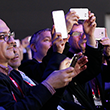 Closing
Closing
It's advisable to come early, as there are 300 delegates to be registered. The conferences will commence at 09:00 sharp, in order to meet the event schedule.
![]() Location: In front of the main Conference Hall
Location: In front of the main Conference Hall
Who runs the show?
 Julia Altenburg
Julia Altenburg
Julia is a founding member of the Rhein-Main People Analytics Meet-up and as one of the „first movers“ involved in the People Analytics scene Germany since 2013.
She is a frequent international speaker, panelist and advisor. Julia has worked as a scientist, psychologist and progressive HR professional and is an experienced coach and consultant for private individuals and corporations.
About the Speaker:
 Ghassan Karian
Ghassan Karian
Ghassan Karian Ghassan started his career as a political campaigns manager for the Labour Party (1996-1998) and then as Head off Media Relations for Saatchi & Saatchi’s PR agency. Subsequently, he led the employee engagement efforts at Rolls-Royce as Director of Internal Communications and Engagement. For three years, he was a member of the People Leadership Team at British Gas, leading on engagement, employee communications and the major cultural change programme being undertaken across the business.
At Karian and Box, in addition to leading a fast-growing business with over 50 professionals, he advises business, HR and communication leadership teams on innovative employee engagement solutions and on providing strategic, actionable insight based on employee analytics and research.
Presentation focus:
· Practical case studies with insights into the latest, most innovative examples of advanced people analytics
· The focus on securing insight aligned to the business and HR/people strategies enables actionable findings to drive performance
· Using visual and verbal storytelling to help bring the data to life for time-poor leaders / stakeholders
Overview:
Real-world case studies from businesses such as Asda, Aviva, BP, HSBC and a range of other businesses with European operations. Powerful insights into which attitudinal and behavioral factors are most likely to drive which business performance metrics. Examples of the most innovative ways of presenting people data to enable quick understanding of the issues at stake, and to help interpret actionable insights.
Key take-aways:
1. Integration of data not aggregation to secure deep insight
2. Predicting performance is achievable using innovative approaches
3. The story of the data matters as much as the data itself
Panelists:
 Ghassan Karian ∙ Founder & CEO ∙ Karian & Box
Ghassan Karian ∙ Founder & CEO ∙ Karian & Box  Marcel Horvath · Director International Partnerships and Strategic Alliances · Virgin Pulse
Marcel Horvath · Director International Partnerships and Strategic Alliances · Virgin Pulse  Luk Smeyers ∙ Global People Analytics Lead ∙ Deloitte
Luk Smeyers ∙ Global People Analytics Lead ∙ Deloitte Moderator:
 Julia Altenburg
Julia AltenburgCandid & controversial - not "just another" round-table
The coffee-break makes for a great occasion to mingle around some 300 delegates, share instant feedback about presentations you enjoyed the most, engage in casual chat and naturally visit the sponsors exhibition area.
![]() Location: HR Tech Expo in front of the main conference hall
Location: HR Tech Expo in front of the main conference hall
Presentation focus:
· What gives HR sit at the C-level table?
· ROI is dead - VOI is here
· Health of your employees drives business outcomes
· Improving the bottom line of your business with health of your employees
· 3 rules to remember when looking at health initiatives data as source of business metrics and how to implement a proper strategy
Overview:
For years, companies have been looking at how to improve productivity, engagement and happiness of employees and how to put these metrics into measurable data. It has not been (and it is not) to achieve this results by improving health and wellbeing of employees. Virgin Pulse, as the world-leading provider of corporate health and engagement solutions, has 15 years of experience and millions of data to prove that improving the health and wellbeing of your employees will improve the most critical business results of any company. We will share this proof with you and you will find out how you can look and tap into these data as well.
Key take-aways:
1. Numbers behind the health of your employees
2. How health drives ROI, engagement and productivity
3. 3 data analytics rules for the health of your employees
 Speaker: Marcel Horvath · Director International Partnerships and Strategic Alliances · Virgin Pulse
Speaker: Marcel Horvath · Director International Partnerships and Strategic Alliances · Virgin Pulse
Presentation focus:
∙ What is an algorithm?
∙ How does a machine learn?
∙ How can a machine replace human decision-making?
∙ How can a machine tell us what the future will look like?
∙ How to build that first predictive model?
Overview:
Everybody talks about it, everybody wants it but only a few know how to do it!
In a non-technical way we will be addressing the things that no-one is talking about but that you must know!
If you like to get started with predictive analytics, you must have a basic understanding of what is and how it works. You should know what it can bring your organization but you should also be aware of the risks that come along with applying predictive analytics.
Key take-aways:
1. You'll have basic understanding of how AI and Machine learning works
2. You'll know which important risks to consider when dealing with predictive analytics
3. You'll know how to get started
 Speaker: Lamin Kinteh · Founder · Zyvo
Speaker: Lamin Kinteh · Founder · Zyvo
Presentation focus:
· Roles and capabilities our team started with (what we had and what we should have focused on as well)
· In an ideal world... (what we thought we would work like, our initial goals)
· Things you should never do in this area: the way we failed... (key learnings about our audience, community building, user experience, business maturity and politics)
· ...just to learn how to pick ourselves up. Learning from the bests, taking one step back in complexity – optimizing HR analytics to better suit our audience and business needs
· How are we helping the business now to achieve its most important goals? (strategic workforce planning, recruitment and talent management, L&D, diversity, etc.)
Overview:
I will present Diageo's 3-year long journey in people analytics with a special focus on the key learnings for anyone who wants to start this area, in a multinational company. The questions I would like to answer and the areas of focus will be:
What we did well and where we failed on our journey?
How to start this function with a small group of 2 or 3 people?
Areas you might need to focus on at the very start that are rarely mentioned but highly important.
How you can build credit and seize the momentum within HR?
Key take-aways:
1. You don't need a big team to have big impact on a company's HR processes
2. Do not over complexity at the start: key capabilities, processes and data
3. Educating the business is crucial - train the HR function as you progress and seize the momentum
 Speaker: Gyorgy Kovacs · Lead HR Analytics Analyst · Diageo
Speaker: Gyorgy Kovacs · Lead HR Analytics Analyst · Diageo
A great opportunity to engage in a casual chat with speakers and your fellow delegates. Lunch will be served at the main hotel restaurant, providing a variety of specialties ranging from traditional German food to best international cuisine.
![]() Location: Main hotel restaurant
Location: Main hotel restaurant
Presentation focus:
∙ The Why, What and How of ONA on the real-life business case
· Present how to analyze and prepare the business case for the use of ONA
· Demonstrate links between ONA and other Organizational development focuses and activities
Overview:
Imagine a good company aiming to become great in a very specific industry in which technology is a hygiene factor and care & service excellence make all the difference. If your goal is to create such an amazing customer experience, so the bondage will last for a lifetime, you and your people must become the core values you put on a poster. The journey from “I say” to “I think” to “I do” to “I am” is not in the focus of this presentation. The dynamic complexity of the multiple agents’ system is.
ONA was used to raise the understanding of the influence and the impact of different people imposed on the company as a system, as well as identifying dominant figures with substantially stronger, but also potentially more dangerous, cultural “gravitational” pull.
Key take-aways:
1. ONA is a fun and useful tool to use and GIGO principle is present
2. Good preparation in the understanding of the outcomes, challenges, and constraints is the key to success in using ONA to back up your business case
3. Knowing and not doing is not knowing. Just do it.
 Speaker: Fran Mikulicic · Research Fellow · Vanderbilt University
Speaker: Fran Mikulicic · Research Fellow · Vanderbilt University
Presentation focus:
∙ Use of People Analytics and specific tools to generate insights
∙ Linking employee engagement survey outcomes with critical leadership components
∙ Showcase how a web-based tool provides management and business leaders with key findings of engagement surveys
Overview:
In a fast growing and dynamic company like FlixBus, employee retention is critical for business success and growth targets. In order to deliver on these strategic goals, FlixBus identified the most important drivers for this topic. During this interactive discussion, we will share how FlixBus is using People Analytics to implement effective HR practices and create actionable insights. We´ll show how a web-based HR tool provides management and HR business partners with the key-findings of the engagement surveys.
Key take-aways:
1. By implementing a tools for People Analytics we gained knowledge out of data and increased retention intention by 30% over the last year
2. Provide audience with insights about how we are using people analytics to increase employee retention and discuss best-practices
3. We link data-driven leadership development with employee survey outcomes
 Speaker: Max Abele · Team Lead Recruiting & Analytics · FlixMobility GmbH
Speaker: Max Abele · Team Lead Recruiting & Analytics · FlixMobility GmbH
The coffee-break makes for a great occasion to mingle around some 300 delegates, share instant feedback about presentations you enjoyed the most, engage in casual chat and naturally visit the sponsors exhibition area.
![]() Location: HR Tech Expo in front of the main conference hall
Location: HR Tech Expo in front of the main conference hall
Presentation focus:
∙ Details of our employee development badge system and how it works in practice
∙ Challenges and difficulties we faced on the way
∙ What's next - how to take the badge system to the next level
Overview:
At Netcentric, we use Holacracy, and two years ago we decided to add some gamification to employee development and implement our own Badge system. Now our employees can collect individual badges (ranging from hard technical to soft and fun ones) which clearly describe what skills they have.
Key take-aways:
1. Insights of adding custom gamified employee development system
2. Things to consider when implementing your own system
3. How to make employee achievements more transparent
 Speaker: Samir Caus · Senior Solution Architect · Netcentric
Speaker: Samir Caus · Senior Solution Architect · Netcentric
Presentation focus:
· Findings from a global survey of HR, Finance and non-HR colleagues about the impact of people analytics.
· Explores the skills, confidence, technology and functional barriers to effective people analytics.
· Explores regional differences in people analytics practice, highlighting global and regional trends in skills, confidence and utility.
· Highlights the growing people analytics agenda and the importance of continued investment in people analytics practice by HR and senior leaders.
Overview:
CIPD conducted a global survey of HR, finance and other non-HR functions to explore how people analytics practice is evolving. The study explored the skills and confidence of HR professionals, and the perspectives of non-HR business leaders on their HR functions. Survey found growing interest in people analytics in the HR function, but a greater need to integrate across functions to develop impact through people analytics data. Recommendations call for HR leaders to champion the development of HR skills, and to integrate across functions to develop data-science capability. Recommendations also call for HR to integrate concepts of "people risk" into people analytics, to understand short, medium and long-term people risks using people data.
Key take-aways:
1. Data visibility and transparency are key for non-HR professionals if they're to utilize people insights in their decision making.
2. People analytics culture is critical for good people analytics outcomes. This includes ensuring leadership uses data in decision making, and engages the workforce on the value and importance of people data.
3. People analytics has potential globally; just over 50% of HR/people professionals say they have ready access to people data. More can be done to promote skills, access and use of people data in HR decision making.
 Speaker: Ed Houghton · Vice President Research & Thought Leadership · Chartered Institute of Personnel and Development (CIPD)
Speaker: Ed Houghton · Vice President Research & Thought Leadership · Chartered Institute of Personnel and Development (CIPD)
 Closing
Closing
Sponsors & partners acknowledgements and drawing of valuable prizes and VIP Tickets for selected events
See you again next year!
what people say